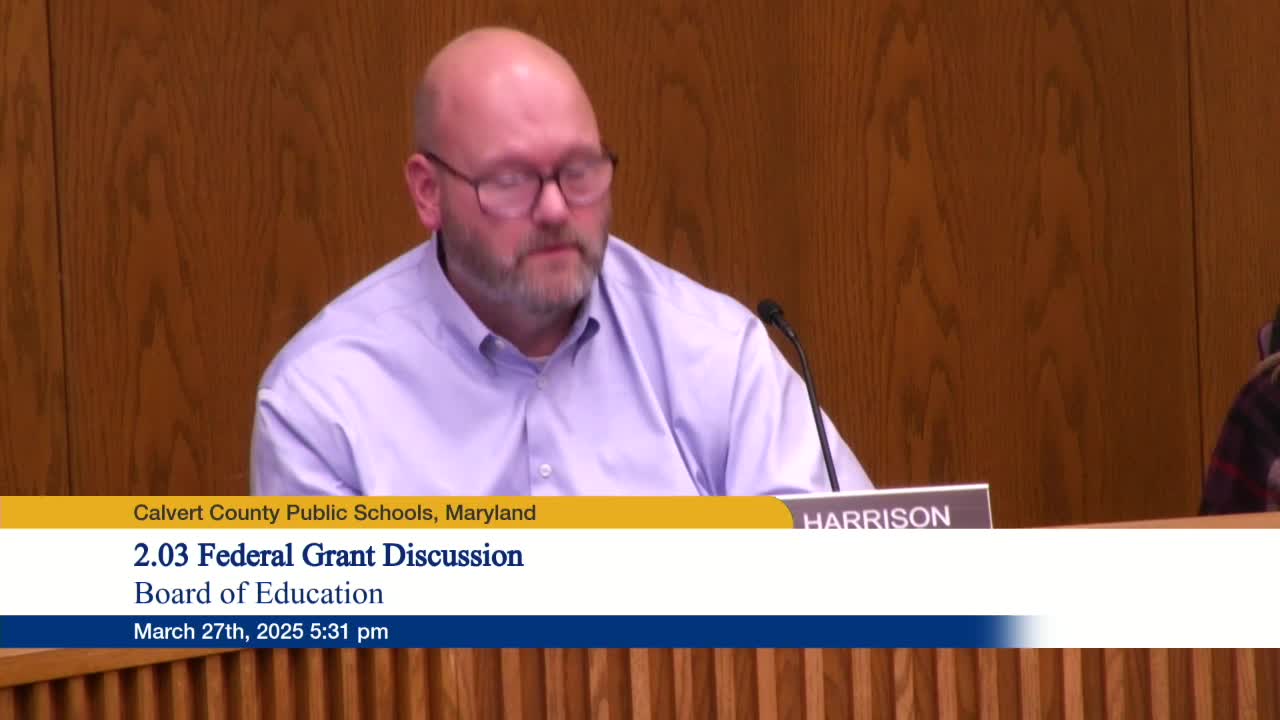Calvert County Public Schools unveils strategic plan for student success and community engagement
March 27, 2025 | Calvert County Public Schools, School Boards, Maryland
Thanks to Scribe from Workplace AI , all articles about Maryland are free for you to enjoy throughout 2025!

This article was created by AI using a video recording of the meeting. It summarizes the key points discussed, but for full details and context, please refer to the video of the full meeting. Link to Full Meeting
As the meeting commenced, board members addressed concerns regarding potential federal grant cancellations, particularly those linked to equity, diversity, and inclusion initiatives. The uncertainty surrounding these grants was palpable, with officials acknowledging the unpredictable nature of federal education policies. “Given what's happening with the Department of Education, it’s a little unpredictable,” one member noted, emphasizing the need for vigilance in funding matters.
The conversation then shifted to staffing implications for the upcoming fiscal year. A vacant job developer position in secondary transition was discussed, with plans to adjust its funding from Medicaid or local sources. This position is crucial for supporting students as they transition from school to post-secondary opportunities, and the board expressed confidence that a part-time role would suffice for the time being.
The highlight of the evening was a presentation on the district's strategic plan, led by Chief Operations Officer Susan Johnson and her team. They outlined the "journey of a graduate," a framework designed to ensure that students not only meet academic standards but also cultivate essential skills for lifelong learning. The mission of Calvert County Public Schools—"unlocking potential, empowering excellence, and shaping futures"—was reiterated as a guiding principle.
The strategic plan focuses on four priority areas: student excellence, culture of learning, accountability, and community engagement. Each area is supported by specific objectives and strategies aimed at fostering a holistic educational environment. For instance, the board discussed various indicators for monitoring progress, including academic performance metrics and graduation rates.
As the meeting concluded, the board members left with a renewed sense of purpose, committed to navigating the challenges ahead while ensuring that every student in Calvert County is equipped for success. The discussions not only reflected the immediate concerns of funding and staffing but also painted a broader picture of a district striving to adapt and thrive in an ever-changing educational landscape.
Converted from Calvert County Public Schools - Board of Education - Mar 27, 2025 meeting on March 27, 2025
Link to Full Meeting
Comments
View full meeting
This article is based on a recent meeting—watch the full video and explore the complete transcript for deeper insights into the discussion.
View full meeting